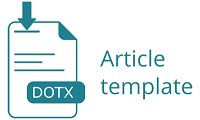The Effect Of Koya Reboned Powder Consumption On Protein Levels Of Pregnant Women In Prevention Of Stunting In Babies
DOI:
https://doi.org/10.32807/jkp.v15i2.624Keywords:
Rebon Shrimp, Pregnant Women, Serum ProteinAbstract
Linear growth retardation in childhood has decreased over the past few decades, but has not had a positive effect. In Indonesia, the change in the prevalence of stunting is around 37%. The nutritional status of pregnant women plays an important role in the incidence of stunting, which will be seen at the age of <5 years in 1000 days of their life. Pregnant women with poor nutrition and significant infection can give birth to a baby with stunting. For this reason, nutritional intake is needed, one of the animal foods that are high in protein is rebon shrimp about 62.4 g / 100 grams of dried shrimp. Protein has an important component so it is necessary for the physical development of children. The purpose of this study was to analyze serum protein levels before and after consuming rebon shrimp based PMT powder in the intervention group and control group and to analyze differences in serum protein levels for pregnant women before and after consuming PMT Koya powder made from rebon shrimp between the control and intervention groups. . This type of research is a quantitative study with a quasi-experimental method using the pre post test control group design approach. The number of respondents was 30 people who were divided into 2 groups, namely the intervention group and the control group. The intervention group was given koya powder as much as 100 grams / day for 7 days, assuming the fulfillment of 70 KKal. Data analysis using Data analysis using the Mann-Whitney test, if the data is not normally distributed. If the data are not normally distributed using the free sample t2 test. The conclusion of the analysis results to answer the research hypothesis. The results of the study were significant values P 0.000 <0.05. Conclusion There was a significant difference in serum protein levels of pregnant women before and after consuming PMT Koya powder made from boiled shrimp between the control and intervention groups.
References
Abdullah, V. I., & Haumahu, C. . (2020). Pengaruh Konsumsi Cookies Kerang Dara (Anadara Granosa) terhadap Perubahan Kadar Haemoglobin Wanita Usia Subur. Journal of Holistic Nursing Science, 7(2), 169–179. https://doi.org/10.31603/nursing.v7i2.3126
Abdullah, V. I., Isir, M., Pongoh, A., Egam, A., & Mallongi, A. (2020). Supplementary Feeding Development of Koya Powder Based on Rebon Shrimp ( Mysis Relicta )
towards Changes in Blood Biochemistry of Pregnant Women as Risk Factor of Linier Growth Disturbance ( Stunting ). 20(4), 2151–2159.
Apriasih, H. (2020). Pengaruh Paritas Di Keluarga Terhadap Status Gizi Anak Balita Dalam Pencegahan Stunting. 84–89.
Beal, T., Tumilowicz, A., Sutrisna, A., Izwardy, D., & Neufeld, L. M. (2018). A review of child stunting determinants in Indonesia. In Maternal and Child Nutrition (Vol. 14, Issue 4).
https://doi.org/10.1111/mcn.12617
Begum, T., Habib, M. A., Chaudhury, S., Akter, H., Firdousi, T., Hafez, F., Mohammad, N., & Amin, A. R. (2019). Association of Serum Albumin Level in Predicting of Preeclampsia among Pregnant Women in Dhaka City of Bangladesh. Journal of Current and Advance Medical Research, 6(2), 83–86. https://doi.org/10.3329/jcamr.v6i2.42976
Bhutta, Z. A., Akseer, N., Keats, E. C., Vaivada, T., Baker, S., Horton, S. E., Katz, J., Menon, P., Piwoz, E., Shekar, M., Victora, C., & Black, R. (2020). How countries can reduce child stunting at scale: Lessons from exemplar countries. American Journal of Clinical Nutrition, 112, 894S-904S. https://doi.org/10.1093/ajcn/nqaa153
Ernawati, F., Rosmalina, Y., & Permanasari, Y. (2013). Pengaruh Asupan Protein ibu hamil dan panjang bayi lahir terhadap kejadian stunting pada anak usia 12 bulan di kabupaten bogor. Penelitian Gizi Dan Makanan, 36(1), 1–11.
Fitriani, H., R, A. S., & Nurdiana, P. (2020). Risk Factors of Maternal Nutrition Status During Pregnancy to Stunting in Toddlers Aged 12-59 Months. Jurnal Keperawatan Padjadjaran, 8(2), 183–191. https://doi.org/10.24198/jkp.v8i2.1305
Haider, B. A., Olofin, I., Wang, M., Spiegelman, D., Ezzati, M., & Fawzi, W. W. (2013). Anaemia, prenatal iron use, and risk of adverse pregnancy outcomes: Systematic review and meta-analysis. In BMJ (Online) (Vol. 347, Issue 7916). https://doi.org/10.1136/bmj.f3443
Jihad, J., Ahmad, L., & ainurrafiq, A. (2016). Analisis Determinan Kejadian Stunting Pada Balita Usia 12-24 Bulan Di Wilayah Kerja Puskesmas Puuwatu Kota Kendari Tahun 2016. Jurnal Ilmiah Mahasiswa Kesehatan Masyarakat Unsyiah, 1(3), 186502.
Kumar, P., Patel, S., & College, M. (2019)
. INTERNATIONAL JOURNAL OF SCIENTIFIC RESEARCH COMPARATIVE STUDY OF SERUM ALBUMIN AND URIC ACID IN GESTATIONAL DIABETES MELLITUS WITH HEALTHY PREGNANCY Dr . Hem Priya Dr . Yogita Soni. 9, 72–73.
Martini, S., & Haryanti, T. (2015). Pengaruh tabu makanan terhadap angka kejadian anemia pada ibu hamil trimester ii. Jurnal Kesehatan Ibu Dan Anak Akademi Kebidanan An-Nur, 1(1), 1–8.
Mekonnen, A., Terefe, W., Bekele Belachew, A., Kahsay Adhanu, A., & Embaye Gezae, K. (2019). Prevalence and Associated Factors of Zinc Deficiency Among Pregnant Women Attending Antenatal Care at Gambella Hospital, Gambella, Ethiopia, 2018. American Journal of Life Sciences, 7(5), 91.
https://doi.org/10.11648/j.ajls.20190705.12
Prendergast, A. J., & Humphrey, J. H. (2014). The stunting syndrome in developing countries. Paediatrics and International Child Health, 34(4), 250–265. https://doi.org/10.1179/2046905514Y.0000000158
Salsa, B., Ani, M., & Ali, R. (2016). Asupan gizi makro dan mikro sebagai faktor risiko stunting anak usi 2-5 tahun di Semarang. Medica Hospitalia, 4(1), 45–50.
Swarjana, I. K. (2015). Metodologi Penelitian Kesehatan [Edisi Revisi].
Zahidatul Rizkah, & Trias Mahmudiono. (2017). Hubungan Antara Umur, Gravida, Dan Status Bekerja Terhadap Resiko Kurang Energi Kronis (KEK) Dan Anemia Pada Ibu Hamil. Amerta Nutrition, 1(2), 72–79. https://doi.org/10.20473/amnt.v1.i2.2017.72-79




